In the annals of Greek mythology, the Nemean Lion stands as a symbol of insurmountable strength and invincibility, known primarily for its pivotal role in the heroic labors of Hercules. This fierce creature, whose hide was impervious to mortal weapons, represents not just a physical challenge but a metaphorical barrier to Hercules’ path to redemption and glory. The purpose of this article is to delve into the rich tapestry of the Nemean Lion myth, providing a comprehensive and factually accurate analysis. We aim to explore not only the myth’s historical and cultural context but also its enduring significance in modern interpretations of Greek mythology. Through this exploration, we will unravel the layers of symbolism and storytelling that have kept the legend of the Nemean Lion alive through the ages.
| Origin | Greek Mythology |
| Classification | Mythical Creature |
| Appearance | A gigantic, invulnerable lion with impenetrable golden fur |
| Mythological Role | Part of the Twelve Labors of Heracles (Hercules), the first labor |
| Defeating the Lion | Heracles strangled the lion with his bare hands and later used its own claws to skin it |
| Significance | Known for its impenetrable hide and its reputation for terrorizing Nemea |
| Cultural Impact | A famous figure in Greek mythology, symbolizing the heroic feats of Heracles |
1. Origin and Mythological Significance
The Origins of the Nemean Lion
The origins of the Nemean Lion in Greek mythology are steeped in both terror and divinity. Believed to be the offspring of the monstrous Typhon and Echidna, the lion is born from a lineage of fearsomeness and power. Some tales even narrate that Hera, the queen of gods, played a role in its upbringing, further adding to its mythical stature. The lion’s descent from such formidable beings serves as a prelude to its own legendary strength and invulnerability.
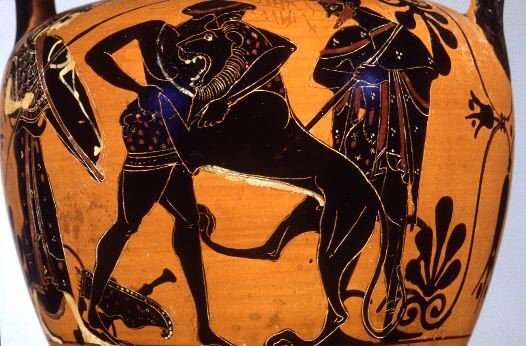
Symbolism and Cultural Significance
In ancient Greek culture, the Nemean Lion was more than a mythical creature; it was a symbol of the daunting challenges faced by mortals. The lion’s impenetrable hide represented obstacles that seemed insurmountable, embodying the trials and tribulations inherent in the human journey. This symbolism was particularly poignant in the context of the lion’s encounter with Hercules, marking the beginning of his Twelve Labors. The battle between Hercules and the Nemean Lion was not merely a test of physical might but a deeper representation of the struggle against fate and nature’s overwhelming forces. This struggle resonated with the ancient Greeks, reflecting their perception of the world as a place filled with formidable challenges that define the path to heroism and greatness.
2. The Nemean Lion in the Labors of Hercules
The First Labor of Hercules
The story of the Nemean Lion is intrinsically linked to Hercules’ first of the Twelve Labors, a series of tasks he must complete as penance and a path to redemption. According to myth, Hercules was tasked by King Eurystheus to bring him the hide of the invulnerable Nemean Lion. This labor was not only a test of Hercules’ physical strength but also his cunning and resilience. The lion’s hide was impervious to metal, wood, and stone, making it a formidable opponent for any warrior. Hercules’ eventual triumph over the lion, using his strength to strangle it and using its own claws to skin it, is a testament to his ingenuity and determination.
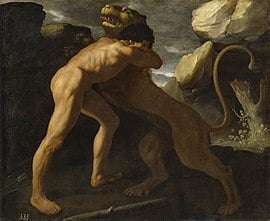
Interpretations Across Sources
The myth of the Nemean Lion and its encounter with Hercules has been told and retold through various sources, each offering a unique perspective. Ancient poets like Hesiod and Pindar mention the lion, highlighting its fearsome nature and Hercules’ bravery. In classical literature, the lion often symbolizes the untamed, chaotic forces of nature that Hercules, representing humanity and civilization, must conquer. Artistic depictions, such as in ancient Greek vase painting, often focus on the dramatic moment of the struggle, emphasizing the heroism of Hercules. In more contemporary interpretations, the story is sometimes seen as a metaphor for internal battles and personal challenges, showcasing the timeless relevance of the myth. These varying interpretations highlight the multifaceted nature of the myth and its ability to convey different meanings across cultures and ages.
3. Artistic and Literary Depictions
The Nemean Lion in Art
The Nemean Lion has been a prominent subject in art, capturing the imagination of artists since antiquity. Ancient Greek vase paintings often depict the dramatic battle between Hercules and the lion, emphasizing the hero’s strength and bravery. These artworks not only narrate a story but also symbolize the triumph of human will over nature’s challenges. In sculptures and reliefs, the lion is often portrayed in mid-struggle with Hercules, highlighting the tension and dynamics of the battle. The Renaissance period saw a resurgence in the depiction of this myth, with artists like Albrecht Dürer and Antonio del Pollaiuolo offering their interpretations, often focusing on the physicality and emotion of the scene. These depictions reflect the enduring appeal of the myth and its adaptability to different artistic styles and periods.
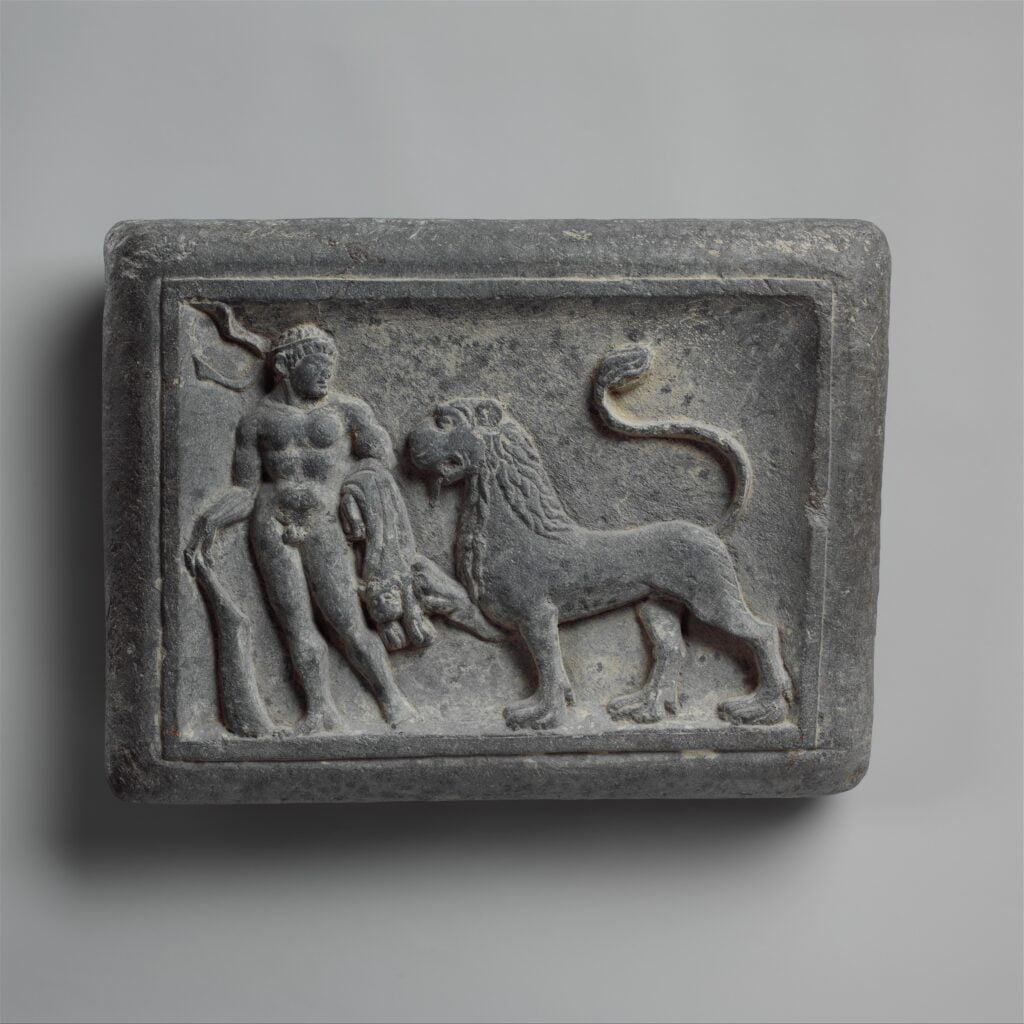
Literary Interpretations
In literature, the Nemean Lion has been represented in various forms, from a fearsome beast to a symbolic figure. Ancient texts, like those of Homer and Ovid, often emphasize the lion’s ferocity and the heroism of Hercules. In more modern literary works, interpreters can see the lion’s role as a metaphor that represents personal or societal challenges. For instance, in C.S. Lewis’s “The Chronicles of Narnia,” one can interpret the lion Aslan as a reinterpretation of the Nemean Lion, embodying both power and benevolence, which starkly contrasts with the original myth’s portrayal of a ruthless creature. Such adaptations show how the Nemean Lion continues to inspire and adapt within different cultural contexts, its story resonating with universal themes of struggle, courage, and triumph over adversity.
4. Symbolism and Modern Interpretations
Symbolism in Contemporary Contexts
In modern times, the symbolism of the Nemean Lion has evolved, reflecting current cultural and societal values. The lion, once a symbol of insurmountable natural challenges, has come to represent personal and internal struggles. In psychological and philosophical discussions, it often stands for the overcoming of one’s fears or the conquering of personal demons. This shift mirrors our contemporary understanding of heroism, not just as a physical conquest but as an internal journey towards self-improvement and resilience.
The Nemean Lion in Modern Media
The myth of the Nemean Lion has found its way into various forms of contemporary media, from literature to film and even video games. In literature, authors have reimagined the myth, sometimes placing it in modern settings or using it as an allegory for contemporary issues. In film, the essence of the myth is often captured in narratives that emphasize the triumph over impossible odds, drawing a parallel to the Herculean task of defeating the Nemean Lion. Video games, too, have incorporated elements of the myth, using the lion as a formidable foe that tests the player’s skill and strategy. These adaptations highlight the versatility of the myth and its ability to engage with audiences across different platforms.
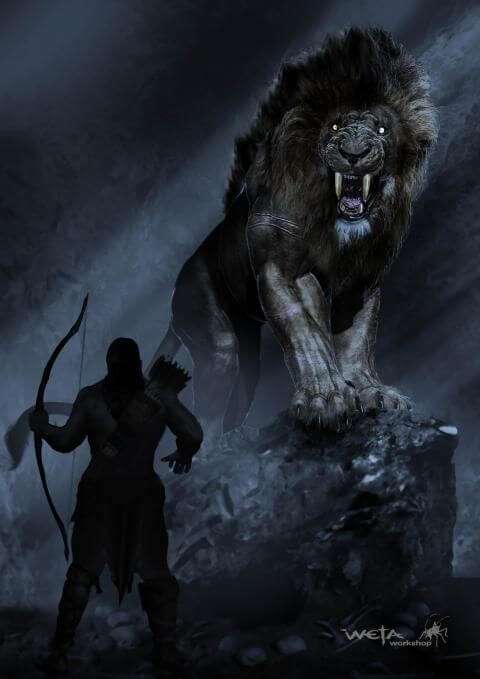
Relevance and Lessons for Today’s Audience
The story of the Nemean Lion continues to hold relevance for modern audiences. It serves as a reminder of the timeless nature of certain human experiences – the struggle against formidable challenges and the pursuit of personal excellence. In a world that increasingly values mental fortitude and resilience, the story of Hercules and the Nemean Lion resonates as a metaphor for overcoming seemingly impossible obstacles. Whether in personal growth, societal battles, or simply in the pursuit of one’s goals, the lessons of the myth remain pertinent, teaching us about the power of perseverance, ingenuity, and the human spirit’s capacity to overcome even the most daunting of challenges.
5. Comparisons with Other Mythological Creatures
Cross-Cultural Comparisons
The Nemean Lion’s mythological narrative finds echoes in various cultures, each boasting creatures that embody similar themes of strength and heroism. For instance, in Norse mythology, the Fenrir wolf shares parallels with the Nemean Lion in terms of its formidable strength and the pivotal role it plays in defining the hero’s journey. Similarly, in Hindu mythology, the demon Hiranyakashipu, who was invulnerable to man or beast, parallels the invincibility of the Nemean Lion, offering a different cultural lens through which to view the theme of overcoming insurmountable odds.
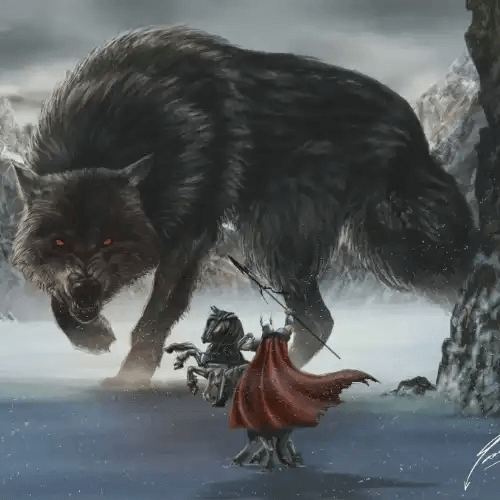
Common Themes and Variations
Despite the variations in their stories and cultural backgrounds, these mythical creatures share common themes. In many cultures, these creatures often serve as the ultimate challenge or obstacle that people must overcome, embodying the universal struggle against overwhelming adversity. However, each culture’s unique values and perspectives often shape the ways in which they defeat or overcome these creatures. For instance, while Greek mythology emphasizes physical strength and cunning in defeating the Nemean Lion, other cultures might highlight the importance of wisdom, moral strength, or even divine intervention.
Universal Appeal of Mythical Creatures
The enduring fascination with creatures like the Nemean Lion across various cultures speaks to the universal appeal of mythical beasts. They serve as a conduit for expressing fundamental human experiences and emotions, such as fear, courage, and the triumph over adversity. These creatures become symbolic narratives through which different cultures and eras can project their own values and ideals. The story of the Nemean Lion, like many other mythological tales, transcends its cultural origin, becoming a part of a global mythological tapestry that continues to captivate and inspire.
6. Conclusion
The Nemean Lion, a legendary figure from Greek mythology, symbolizes more than just a formidable adversary in Hercules’ journey; it represents the timeless struggle against seemingly insurmountable challenges. Through various interpretations in art, literature, and modern media, the lion’s story has transcended its ancient origins, reflecting universal themes of courage, resilience, and triumph over adversity. Its enduring appeal in contemporary culture highlights not only the relevance of Greek mythology in today’s world but also our ongoing fascination with stories that echo our deepest struggles and aspirations. The Nemean Lion, in its mythical grandeur, continues to inspire and remind us of the indomitable strength of the human spirit.
